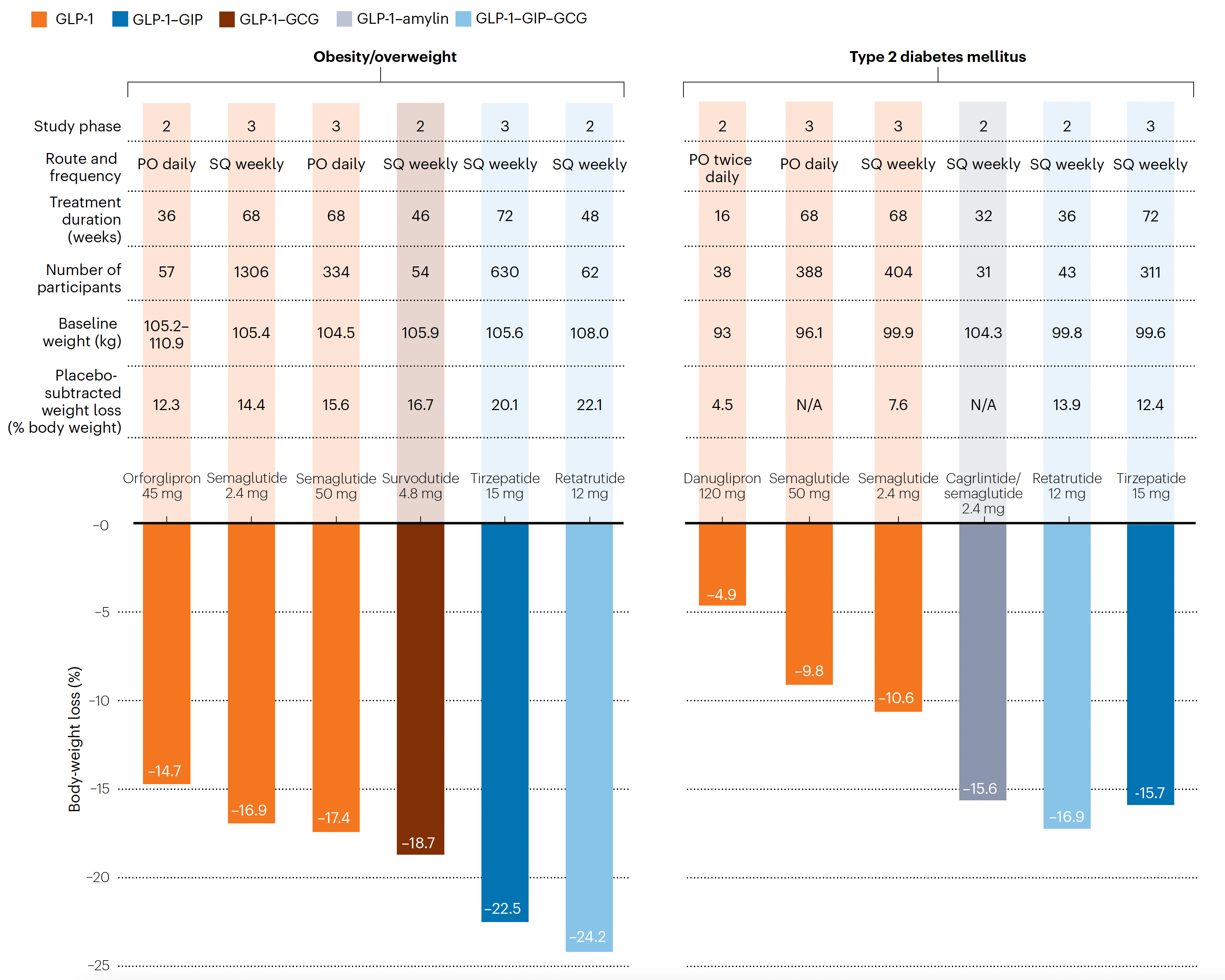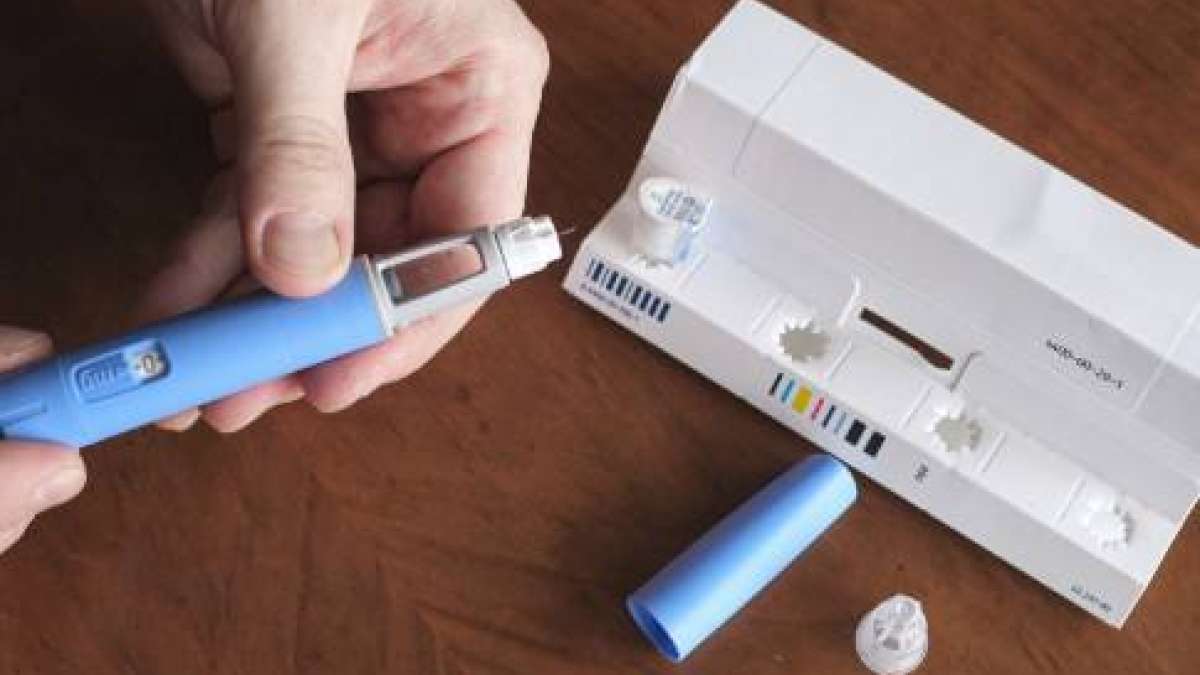To minimize GLP-1 weight loss nondiabetic side effects, start with a lower dose and gradually increase it. Maintain a healthy diet and stay hydrated.
GLP-1 receptor agonists are popular for weight loss, especially among nondiabetic individuals. These medications, while effective, can cause side effects like nausea, vomiting, and diarrhea. Starting with a lower dose helps the body adjust, reducing the intensity of side effects.
Gradually increasing the dosage allows your body to adapt without overwhelming it. A balanced diet rich in fiber and hydration can also mitigate side effects. Consulting with a healthcare provider ensures you follow a safe and effective regimen. Proper management ensures you reap the benefits without significant discomfort. Prioritize your health by combining medication with healthy lifestyle choices.

Credit: erictopol.substack.com
Introduction To Glp-1 And Its Role In Weight Loss
GLP-1, or Glucagon-Like Peptide-1, is a hormone. It plays a major role in regulating blood sugar levels. This hormone is gaining attention for its weight loss benefits. Understanding its impact can help minimize potential side effects.
The Science Behind Glp-1
GLP-1 is released in the intestine. It stimulates insulin secretion after eating. This helps control blood sugar. It also slows down gastric emptying. This means food stays in the stomach longer, leading to a feeling of fullness.
GLP-1 affects the brain too. It reduces appetite by acting on appetite centers. This complex mechanism makes GLP-1 a powerful tool for weight management.
Glp-1’s Impact On Weight Management
GLP-1 has a significant impact on weight management. It helps reduce food intake and body weight. This is due to its role in increasing satiety and decreasing hunger.
Here are some key benefits of GLP-1 in weight management:
- Reduces appetite: Less hunger means fewer calories consumed.
- Increases fullness: Longer feeling of fullness reduces snacking.
- Improves insulin sensitivity: Better control over blood sugar levels.
These benefits make GLP-1 a valuable tool for weight loss, even for nondiabetics. Understanding its role can help in minimizing side effects.
Common Non-diabetic Side Effects Of Glp-1
GLP-1 medications help with weight loss. They can cause side effects. Knowing these can help manage them better.
Gastrointestinal Disturbances
Gastrointestinal disturbances are the most common side effects. Many people experience nausea. Others might face vomiting or diarrhea. These symptoms are usually mild. They often go away with time.
To reduce these effects, eat smaller meals. Avoid fatty foods. Drink plenty of water. This helps your body adjust better.
Here’s a quick list to manage gastrointestinal disturbances:
- Eat smaller, frequent meals
- Stay hydrated
- Avoid fatty and spicy foods
Potential Risks And Less Common Side Effects
GLP-1 medications can have other side effects. These are less common but important to know.
| Side Effect | Description |
|---|---|
| Hypoglycemia | Low blood sugar, especially if combined with other medications. |
| Pancreatitis | Inflammation of the pancreas, a rare but serious condition. |
| Kidney Issues | Can affect kidney function. Monitor if you have kidney problems. |
Always consult your doctor if you experience any unusual symptoms. They can provide personalized advice and guidance.
Nutritional Strategies To Counter Side Effects
GLP-1 therapy can help with weight loss. But, it may cause side effects in nondiabetic individuals. Using specific nutritional strategies can help minimize these side effects. Here, we discuss dietary adjustments and essential nutrients.
Dietary Adjustments For Better Tolerance
Making some dietary adjustments can help improve your body’s tolerance to GLP-1 therapy. Here are some tips:
- Small, Frequent Meals: Opt for smaller meals throughout the day. This can reduce nausea and gastrointestinal discomfort.
- Low-Fat Foods: Choose low-fat food options. This helps in reducing the risk of digestive issues.
- Stay Hydrated: Drink plenty of water. Proper hydration helps in better digestion and reduces constipation.
- Avoid Sugary Foods: Limit sugary foods and drinks. This helps in managing blood sugar levels and reduces cravings.
Essential Nutrients To Complement Glp-1 Therapy
Certain nutrients can enhance the effectiveness of GLP-1 therapy. They also help in reducing side effects. Here are some essential nutrients to consider:
| Nutrient | Benefits | Food Sources |
|---|---|---|
| Fiber | Helps in digestion and reduces constipation. | Whole grains, fruits, vegetables, legumes. |
| Protein | Supports muscle mass and reduces hunger. | Lean meats, eggs, dairy, beans. |
| Omega-3 Fatty Acids | Reduces inflammation and supports heart health. | Fish, flaxseeds, walnuts, chia seeds. |
| Magnesium | Supports muscle and nerve function. | Nuts, seeds, whole grains, leafy greens. |

Credit: epicresearch.org
Lifestyle Changes For Enhanced Glp-1 Efficacy
GLP-1 medications can help with weight loss. But lifestyle changes can make them even more effective. By incorporating physical activity and stress management techniques, you can minimize side effects and boost results.
Incorporating Physical Activity
Adding regular exercise to your routine can greatly enhance GLP-1 efficacy. Aim for at least 30 minutes of moderate activity daily. This can include activities like:
- Walking
- Jogging
- Cycling
- Swimming
Physical activity helps improve metabolism and energy levels. It also reduces the risk of side effects. Remember to start slow and gradually increase your intensity.
Stress Management Techniques
Stress can impact your weight loss journey. Effective stress management techniques can enhance GLP-1 efficacy. Some techniques include:
- Practicing mindfulness and meditation
- Engaging in deep breathing exercises
- Keeping a journal to track your feelings
- Spending time in nature
Reducing stress can improve your overall well-being. It can also make your GLP-1 treatment more effective. Consistent practice of these techniques is key.
Monitoring And Adjusting Glp-1 Therapy
GLP-1 therapy can help with weight loss in nondiabetic individuals. Monitoring and adjusting the therapy is crucial to minimize side effects. This ensures the treatment remains effective and safe.
Regular Check-ups With Healthcare Providers
Regular check-ups with healthcare providers are essential. These check-ups help track your progress and detect any side effects early. Your healthcare provider can adjust the treatment plan as needed.
During these visits, your doctor might:
- Check your weight and vital signs.
- Review your diet and physical activity levels.
- Discuss any side effects you might be experiencing.
Make sure to keep a log of your symptoms and bring it to your appointments. This helps your doctor make informed decisions about your therapy.
Adjusting Dosages For Optimal Outcomes
Adjusting dosages is another important aspect of GLP-1 therapy. The goal is to find the dose that works best for you with minimal side effects.
Your healthcare provider may start with a low dose and gradually increase it. This approach helps your body adjust to the medication and reduces the risk of side effects.
If you experience side effects, your doctor might:
- Reduce the dose temporarily.
- Switch to a different GLP-1 medication.
- Recommend lifestyle changes to support the treatment.
Effective communication with your healthcare provider is key. Always report any unusual symptoms or concerns promptly. This ensures timely adjustments and better outcomes.

Credit: www.uclahealth.org
Frequently Asked Questions
What Are Common Glp-1 Weight Loss Side Effects?
Common Glp-1 weight loss side effects include nausea, diarrhea, and vomiting. These symptoms usually decrease over time. Staying hydrated and eating small, frequent meals can help manage these side effects.
How Can I Reduce Nausea From Glp-1?
To reduce nausea from Glp-1, start with a low dose and gradually increase it. Eat smaller meals more frequently and avoid fatty foods. Staying hydrated and resting after meals also helps.
Can Glp-1 Cause Long-term Side Effects?
Long-term side effects of Glp-1 are rare but can include pancreatitis and kidney issues. Regular monitoring by your healthcare provider is essential. Always report any unusual symptoms promptly.
Is Glp-1 Safe For Non-diabetics?
Glp-1 is generally safe for non-diabetics but should be used under medical supervision. Side effects are similar to those in diabetics. Consult your healthcare provider for personalized advice.
Conclusion
Managing GLP-1 weight loss side effects for nondiabetics is achievable. Follow a balanced diet and stay hydrated. Consult your healthcare provider for personalized advice. Prioritizing overall wellness helps minimize side effects effectively. Remember, a healthy lifestyle plays a crucial role in achieving your weight loss goals.




